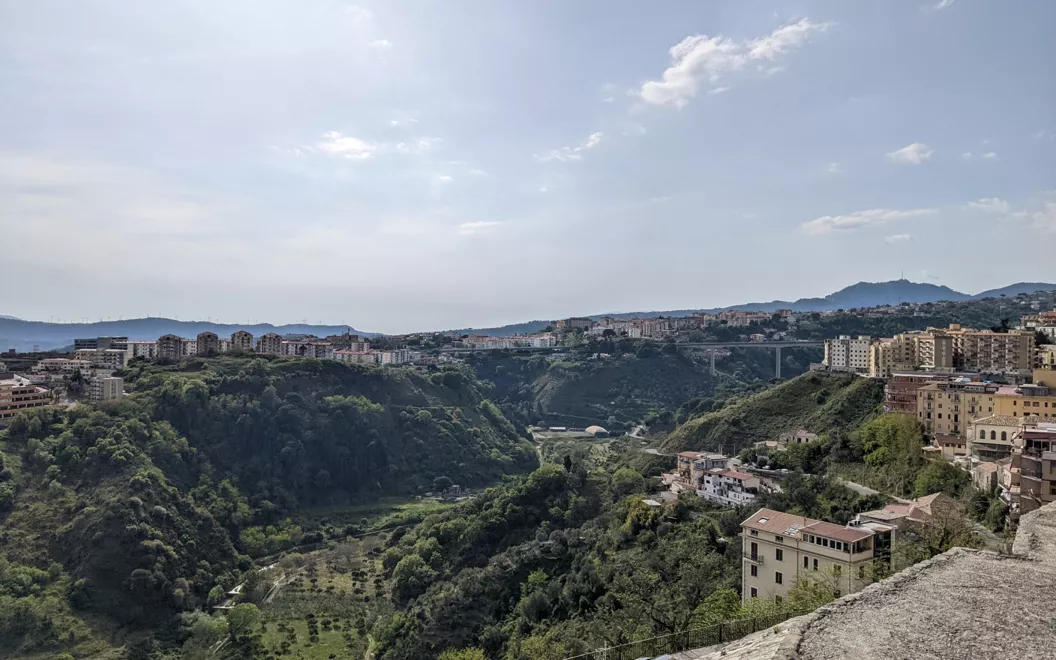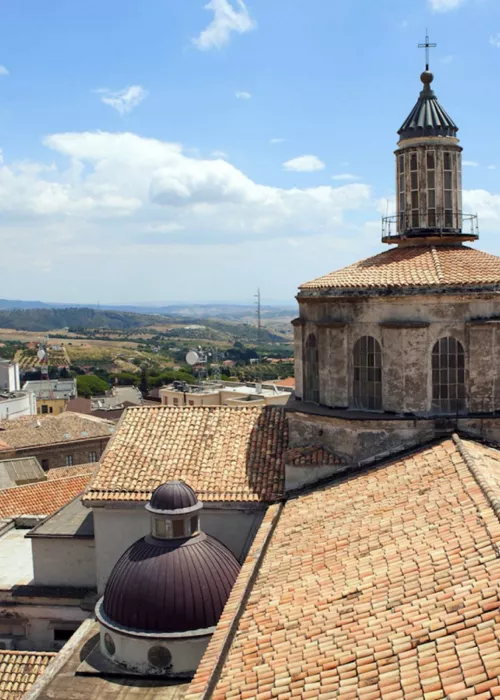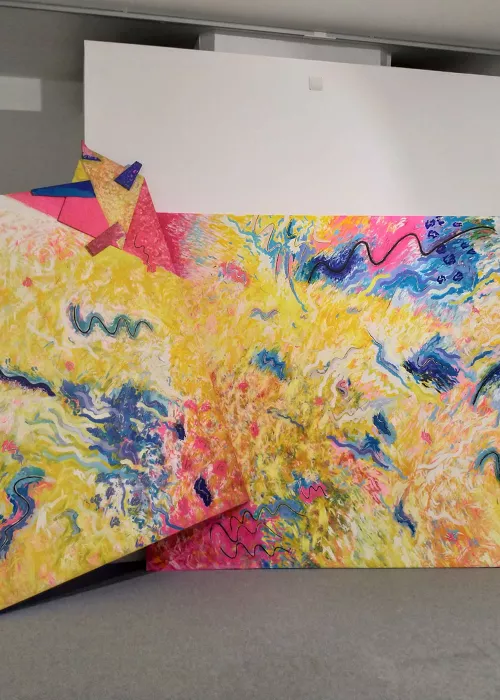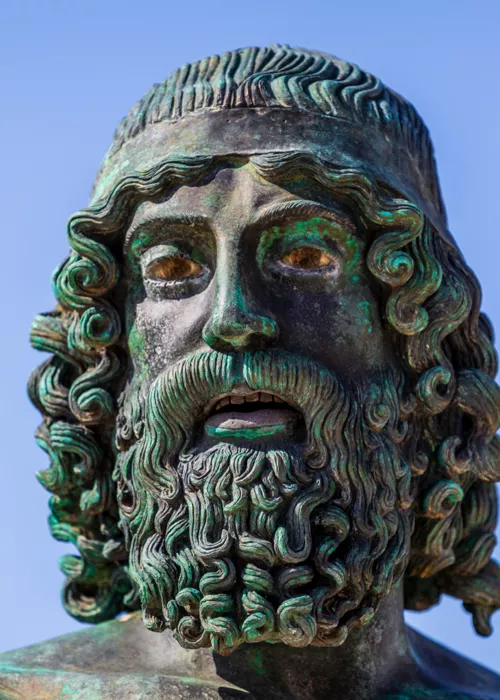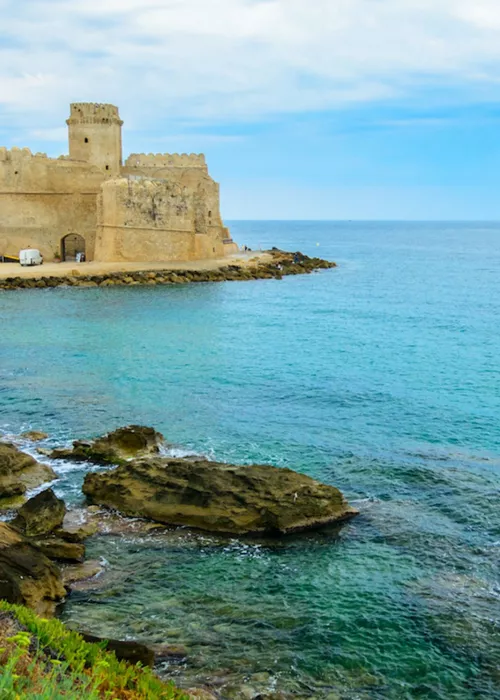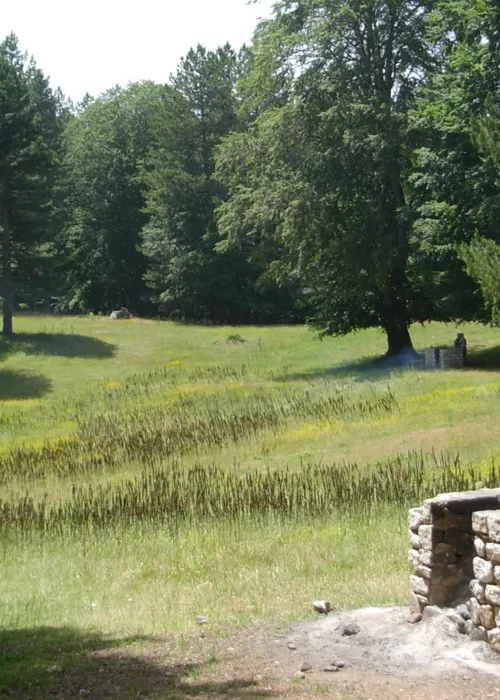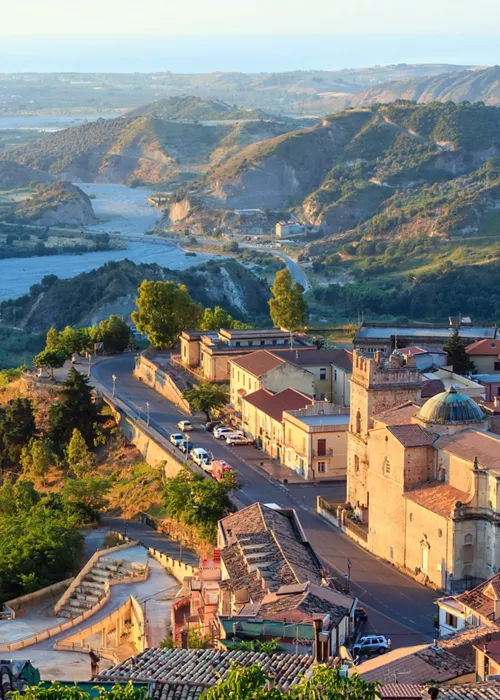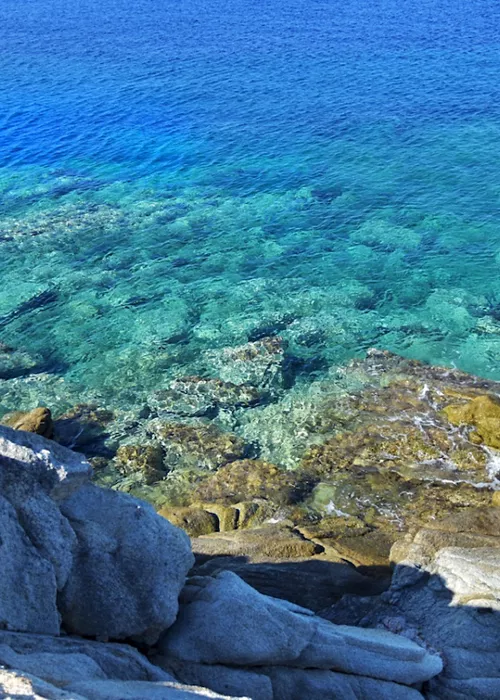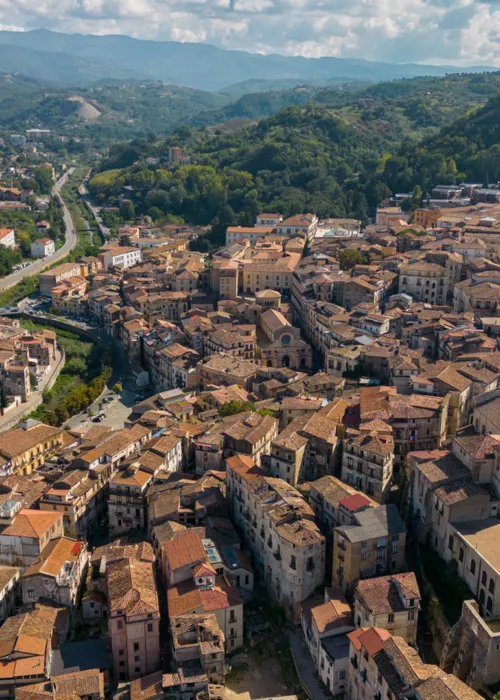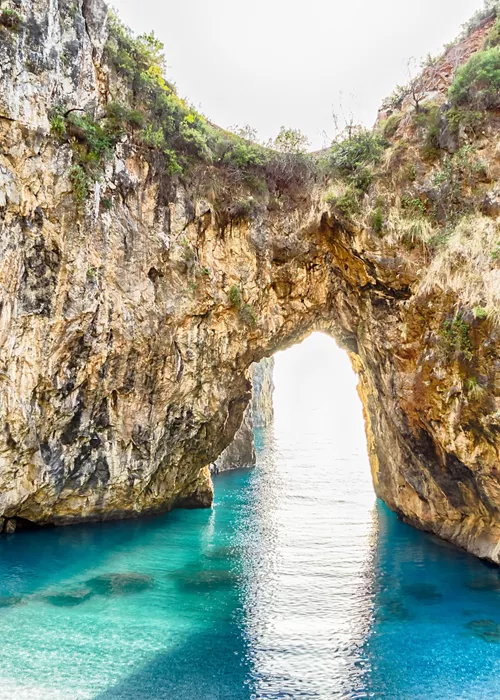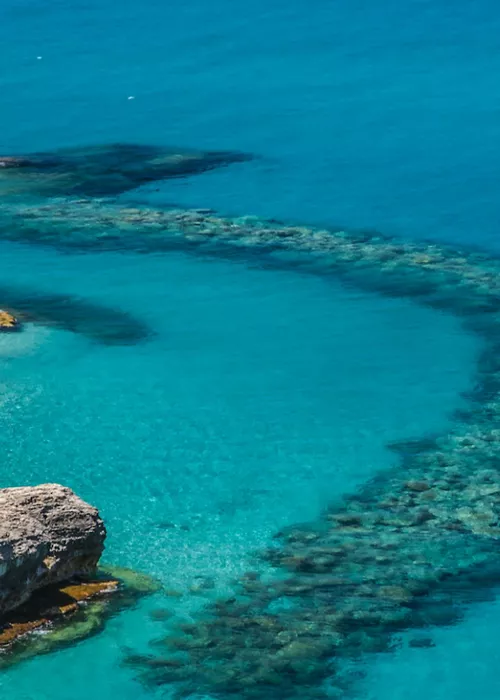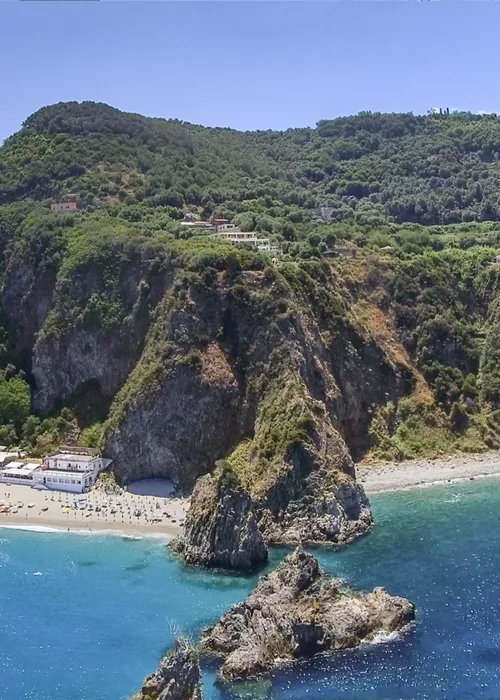Catanzaro, the city between the two seas
6 minutes
The capital of Calabria, Catanzaro is known as the City between two seas, as it is located at the narrowest point in Italy, separating the Ionian coast from the Tyrrhenian. Its origins are very ancient, in fact, legend has it that the Magna-Greek city was founded by Ulysses thanks to the unique characteristics of its territory, a crossing point along the route between East and West. Other hypotheses, however, trace the foundation of Catanzaro back to the ancient Greek colony that later became Scolacium.
The city
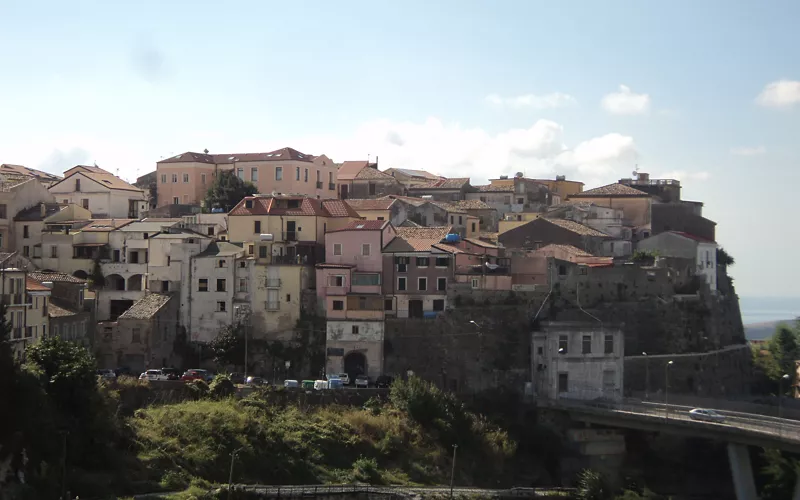
Catanzaro is known as the City of the Three Vs, referring to three of the characteristics that historically distinguish it: the Wind, the Velvet, and Vitaliano, the Patron Saint. Strong sea breezes influence its climate, making it rather windy. Silk and textile craftsmanship gave Catanzaro an international reputation in the art of silk until 1800. St Vitalian is the patron saint of the city and his relics were sent here in recognition of the city's reception of Pope Calistus II.
The City today has modern cultural facilities, such as the new Politeama Theatre, the San Giovanni monumental complex, home to important exhibitions, the "Magna Grecia" outdoor arena and the "Casalinuovo" Auditorium.
In its historic centre, you can admire important monuments and ancient churches, such as the Cathedral, which has the Madonna and Child by Antonello Gagini from Messina, dating back to the 16th century. The Norman Tower is what remains of the remains of the ancient Norman castle. Villa Trieste is surrounded by enchanting gardens that preserve rare plants and statues of world-famous Calabrian characters. In addition, the Belvedere is an unmissable viewpoint, perfect for admiring the Fiumarella valley and the Gulf of Squillace. Finally, the Provincial Museum collects prehistoric finds and collections of ancient coins.
The Cathedral
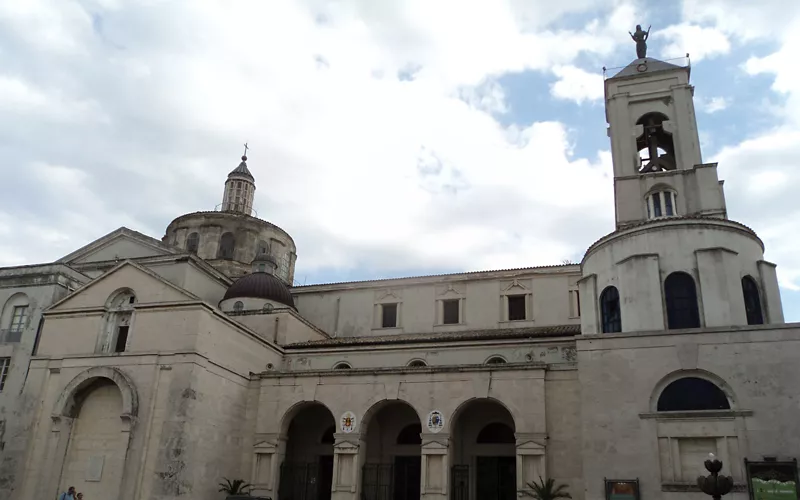
Santa Maria Assunta Cathedral is the city's main place of worship, built in the 12th century and restored on numerous occasions. The original church, on which the cathedral now stands, was built in 1121, during the Norman era, and was dedicated to Assumption of the Blessed Virgin Mary and to the Apostles Peter and Paul. The chapel dedicated to St Vitaliano, the city's patron saint, which house his relics, was built in 1309. The current architectural design features three beautiful bronze doors on the central façade and three on the side façade facing the cathedral square, while on the right is the 42-metre bell tower topped by a bronze statue of the Assumption.
Inside, you can see masterpieces such as the painting of the Madonna of the Angels with Child by the Messina school, a bust of the city's patron St Vitaliano and, in the apse, an 18th-century painting of the Assumption.
Basilica of the Immaculate Conception
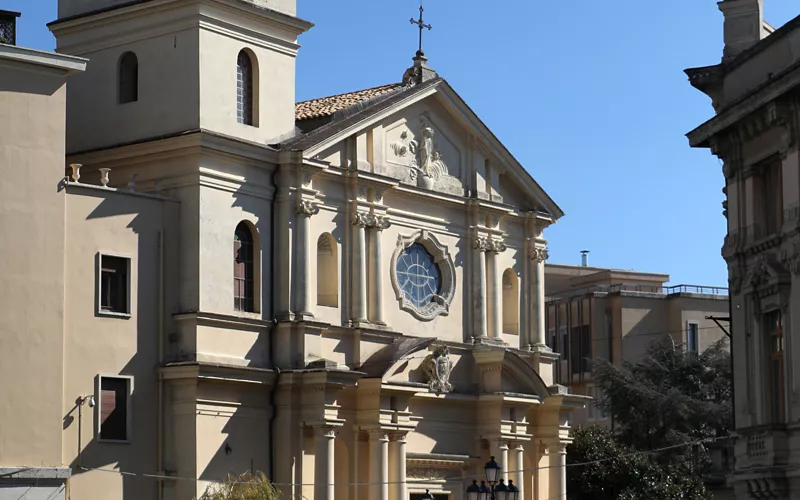
The Basilica of the Immaculate Conception was built in 1254 in the heart of the city and, over time, has undergone extensive extension works that have helped define its present-day appearance. The interior houses various chapels, each belonging to noble city families, who decorated them with polychrome marble and stucco altars. Works of art include the 18th-century Neapolitan wooden statue of St. Roch and the 18th-century wooden statues of St. Joseph, Our Lady of Sorrows, St. Michael and St. Alphonsus, from the suppressed Church of Santa Caterina.
Bisantis Bridge
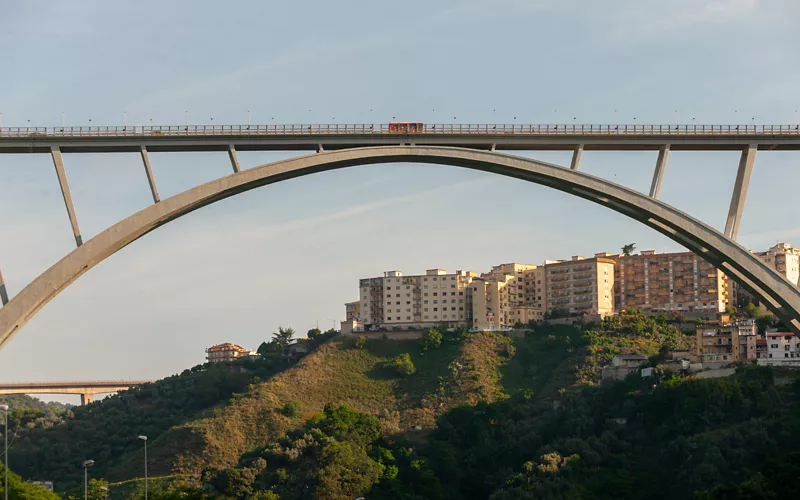
Built in 1962 by architect Riccardo Morandi, at the time of its construction, the Bisantis Bridge was the largest in the world, with a height of 120 metres, capable of withstanding wind gusts of over 140 km/h. Today, the bridge is the second tallest in Europe and the largest in Italy in terms of span, height and length. The structure is a true monument of engineering and architecture, and has become a symbol of the city.
San Giovanni monumental complex
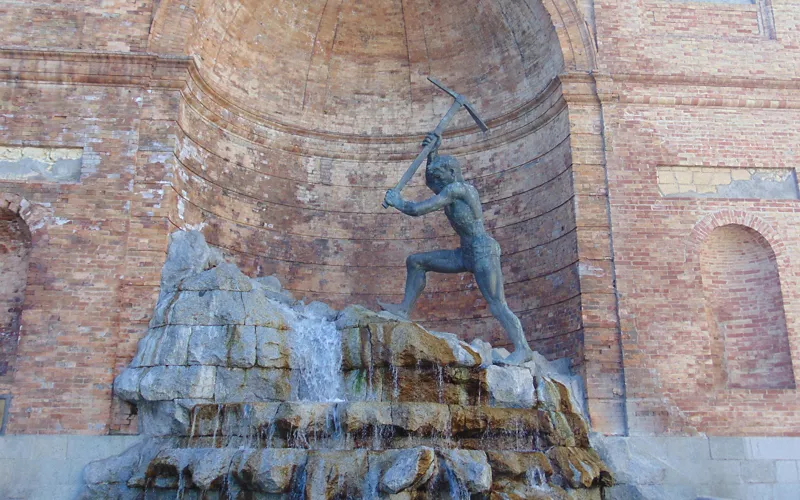
The San Giovanni monumental complex, built on the remains of the ancient Norman castle between the 15th and 17th centuries, includes the monumental fountain of "The Quarryman", by Calabrian sculptor Giuseppe Rito, the large panoramic square, the Charles V Tower and the remaining castle walls. San Giovanni also features a large exhibition area on two floors. Today, the monumental complex has become one of the most important and prestigious cultural and exhibition centres in southern Italy. Since 2017, it has been possible to visit the castle's ancient dungeons, which have been secured and restored to the highest standards of usability.
Politeama Theatre
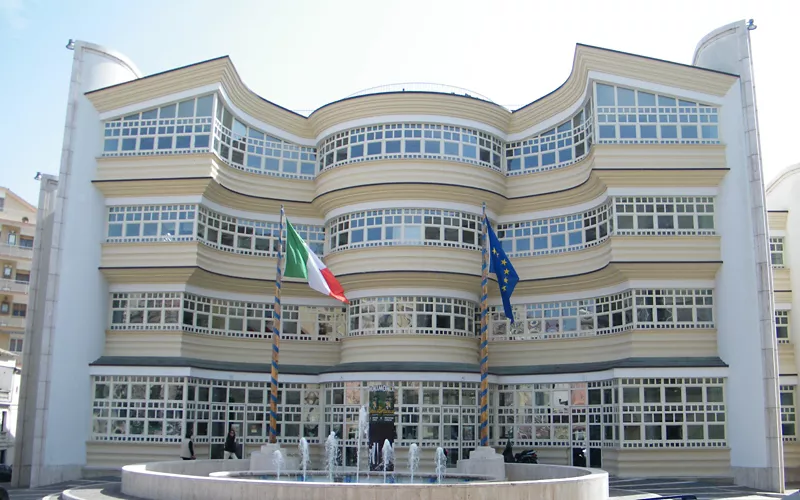
The Politeama Theatre, the youngest of the great Italian theatres, has a structure that respects the architectural canons of classical Italian theatre, with the parterre following a wave-like movement on an almost concave surface. Along the curved line of the hall are the five tiers of boxes, decorated with seven-pointed stars as musical symbols. The stage, with its large dimensions and technological capabilities, hosts artists from all over the world, from grand opera to symphony, from dance to operetta, and from drama to musicals. In the entrance square you can admire an artistic fountain designed by architect Portoghesi.
The Biodiversity Park and the International Sculpture Park
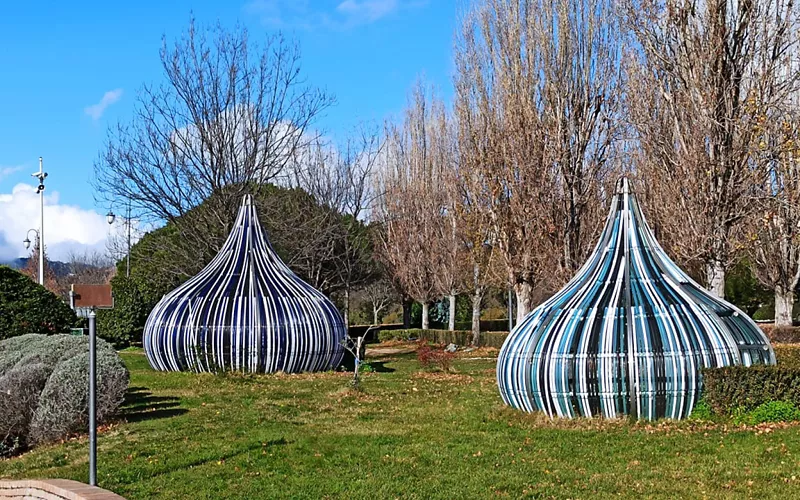
The park consists of a 60-hectare green area in the heart of the city of Catanzaro and provides an ecosystem rich in fauna and flora, a place where nature intertwines with culture, sport and recreation. The park houses the headquarters of CRAS (Wild Animal Rescue Centre), the MUSMI ("Brigata Catanzaro" Military History Museum) and the Provincial Police Corps.
You can view the prestigious contemporary art collection, with installations by Dennis Oppenheim (Electric Kisses), Tony Cragg (Cast Glances), Jan Fabre (De man de wolken meet/The man who measures the clouds), Mimmo Paladino (Testimonies), seven iron sculptures from Antony Gormley's Time Horizon cycle, a cement mixer by Wim Delvoye, Totem, a representation of the character Darth Vader, by Marc Quinn, and, finally, a painted bronze diptych by Stephan Balkenhol depicting a man and a dancer.
Museum of the Arts
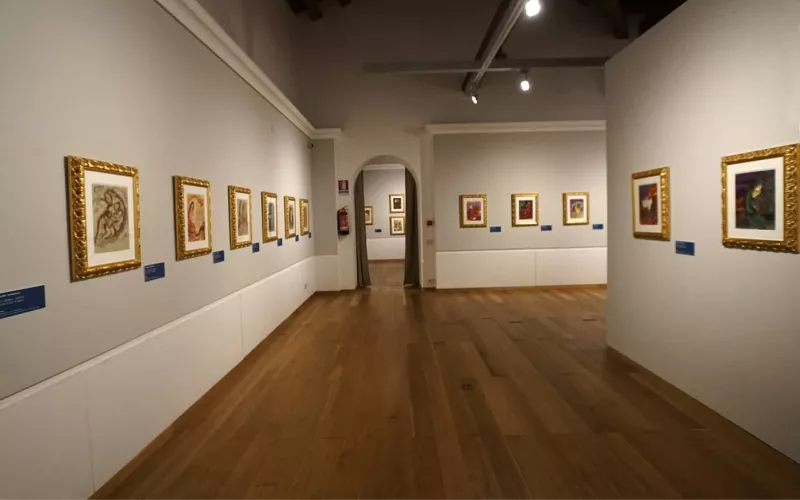
The MARCA is a multifunctional museum centre of excellence, embracing different artistic trends, from ancient art to contemporary language. The Museum is located in an old building in the city centre and is arranged on three floors. The building has a lovely garden and courtyard, with a large terrace offers an impressive view of the city. The current exhibition consists of a remarkable collection of works dating from the 16th to the 20th century, plus those of the Rotella Foundation, dedicated to Mimmo Rotella from Catanzaro, one of the greatest masters of the 20th century. The ground floor houses the Provincial Painting and Plaster Cast galleries, with around 120 works between paintings and sculptures, while the first floor houses the permanent Rotella collection and rooms used for temporary exhibitions. The basement houses the multi-purpose centre for contemporary culture.
Catanzaro Lido
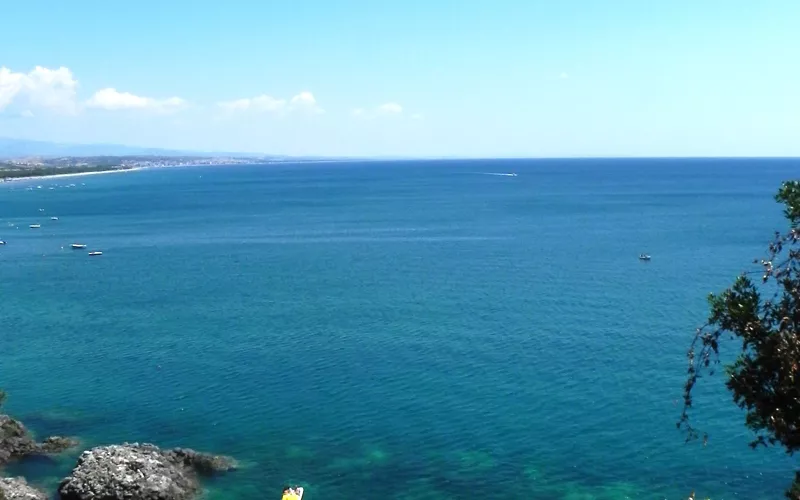
Catanzaro Lido is located a few kilometres from the city centre and stretches along the Ionian coast in the Gulf of Squillace. The seafront features numerous bathing establishments, hotels and clubs. Despite its typically maritime character, it houses a number of religious buildings and monuments of historical and cultural importance, such as the Ancora, an imposing monument dedicated to the fallen at sea; the Tonnina Tower, about 30 metres high, which was part of the Ledoga tannin factory; and a Gutta, a 6 metre-diameter circular buoy positioned on the seafront and used for mooring fishing boats.
Gastronomy
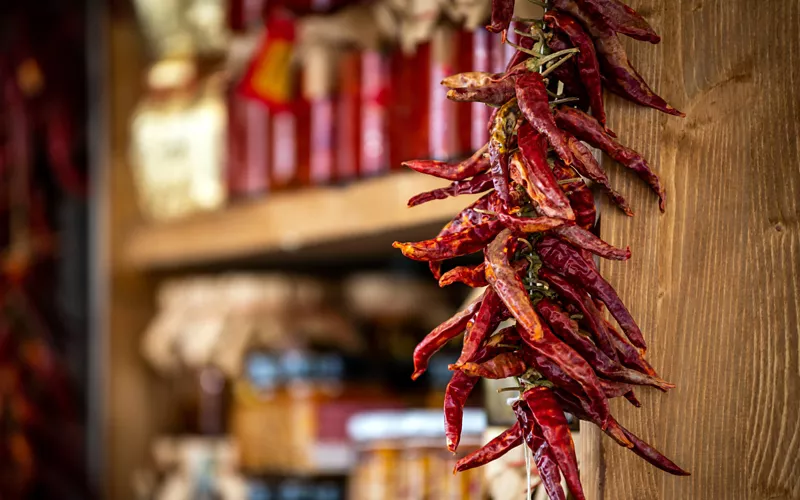
The typical cuisine of the Catanzaro area is characterised by its simple and authentic products, such as olive oil, chilli and wholemeal bread. Must-try local specialities include pasta china, pasta stuffed with provola cheese, hard-boiled eggs and soppressata, topped with meat sauce and grated cheese, and ciambotta, a vegetarian dish of dry pasta topped with fried eggs and pecorino cheese. Among the most famous dishes are u Murzeddhu, tripe cooked over low heat with a spicy sauce. Tradition has it that it is eaten inside pitta, a typical round bread. There are also many characteristic sweets, such as crocette, oven-baked dried figs filled with walnuts, cinnamon and candied citron, accompanied by the local wine, Malvasia.
Content compiled with information provided by our partnerRegione Calabria

